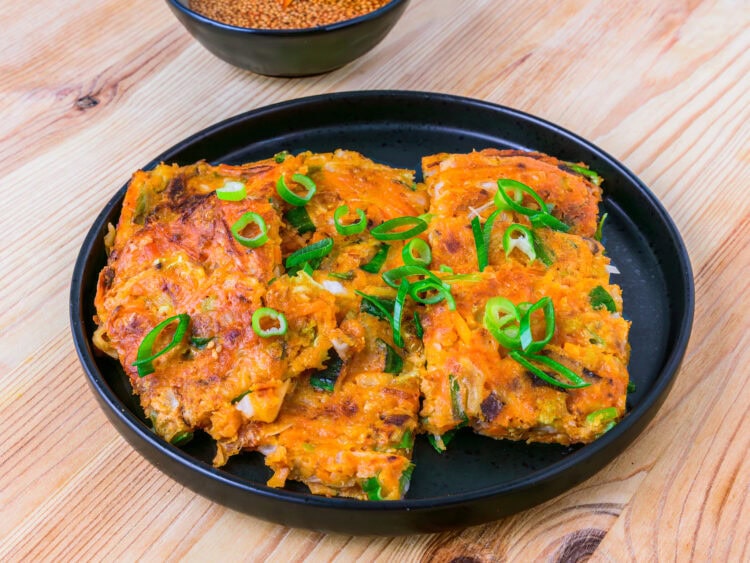Quick and easy vegetable pancakes to make the most of spring!
Even though we haven’t been able to make the most of this pre-summer period, I’ve come up with a recipe that will give us all the taste of spring that we haven’t had this year!
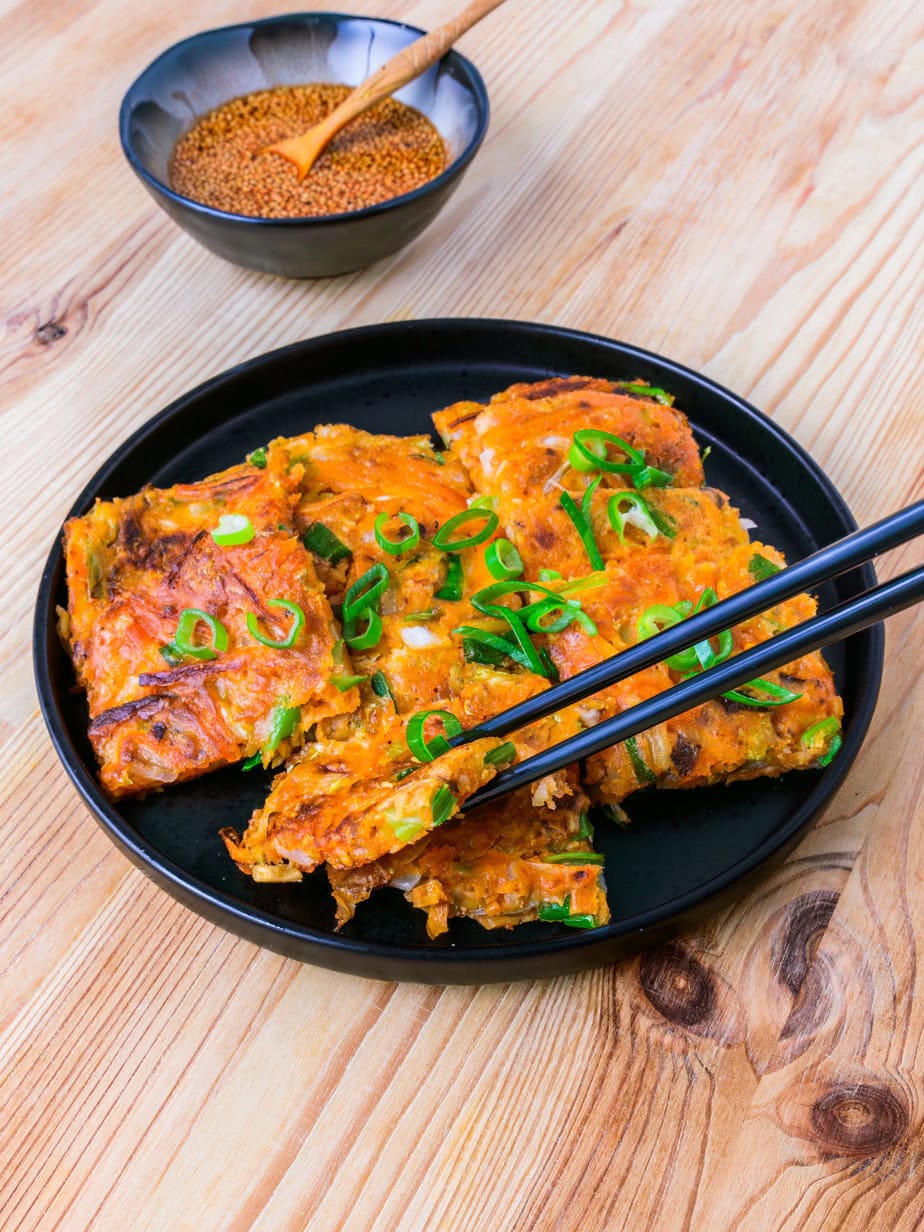
On the menu: pancakes with spring onions, carrots, shiitake mushrooms and Chinese cabbage, served with a tasty sauce made from soy sauce and sesame seeds.
What is Yachaejeon?
If you’re already a fan of Vietnamese pancakes like Bánh Xèo, you’ll certainly fall in love with Yachaejeon. I should point out, though, that these are still quite different.
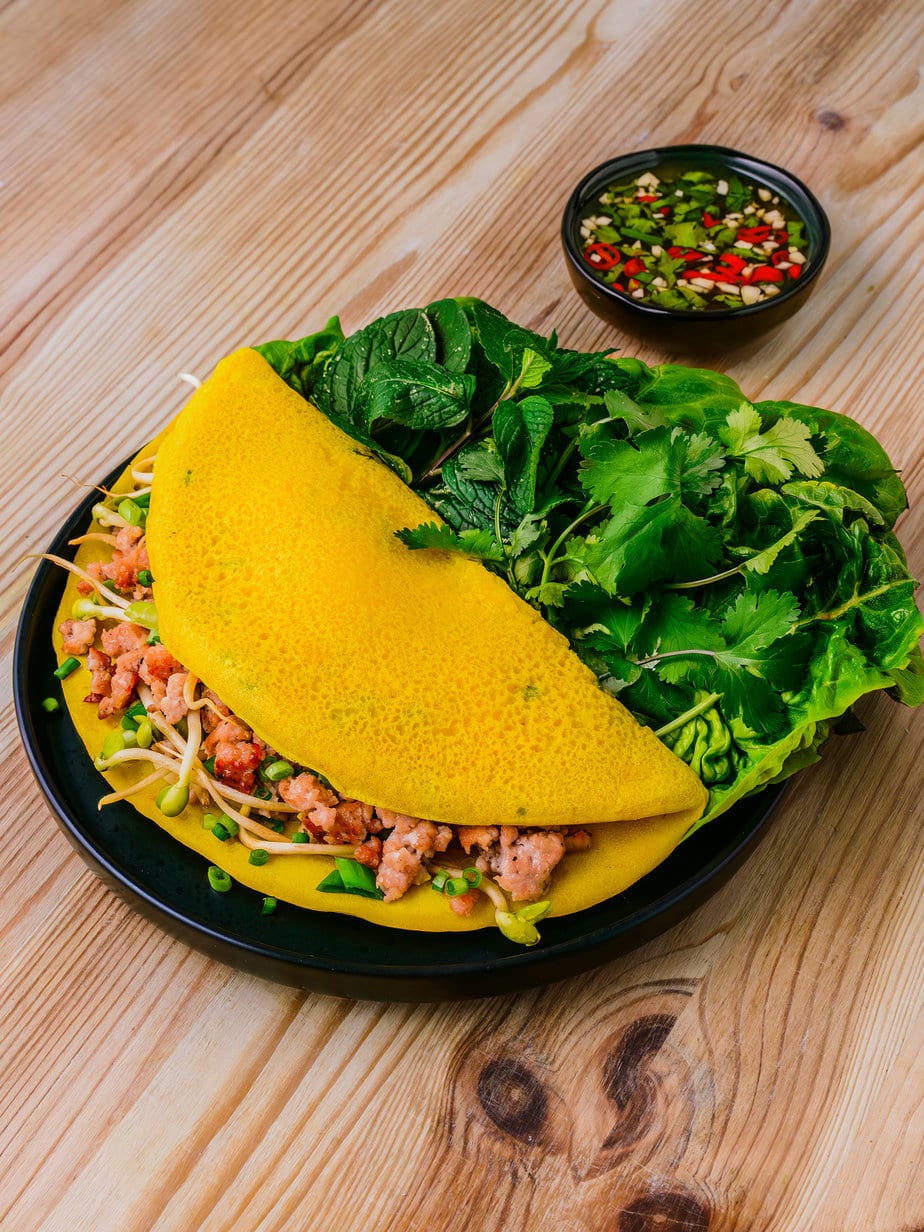
Yachaejeon don’t usually contain meat, so the aesthetics aren’t the same either. In any case, what joins them manages to put everyone in agreement: we love these pancakes for their crispiness, delicacy and sweetness.
And we’re not the only ones: in Korea, it’s become a very popular streetfood dish. In fact, they make delicious banchan.
Yachaejeon are often served cut into squares as a side dish or snack. In short, it’s a great way to use those pesky fridge veggies and make them look good in one dish!
Where does Yachaejeon come from?
Pancakes come in all shapes and sizes. So it’s hard to say exactly where they come from, especially when it comes to Yachaejeon. Just that it’s a typical Korean recipe. It’s a relatively simple dish that doesn’t require many ingredients.
So it’s called “Yachaejeon”. The term “yachae” refers to vegetables and “jeon” means “pancake”. Quite simply.
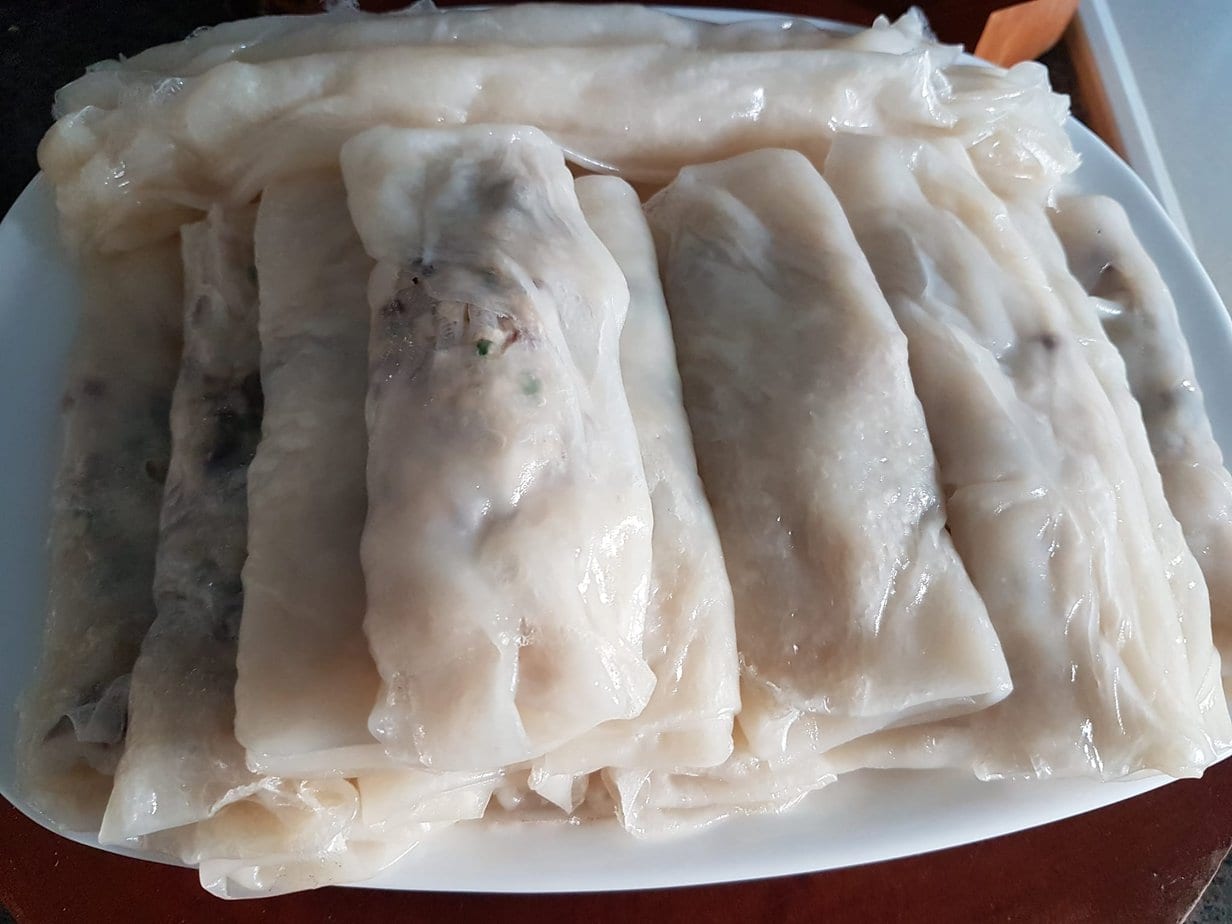
Traditionally, Yachaejeon contains zucchini, carrots, spring onion and sometimes hot pepper… But of course, there are many variations on this recipe. But the principle remains the same everywhere.
We prepare a basic dough with rice flour and add julienned vegetables. A quick turn in the frying pan and you’re ready to go. No wonder it’s so popular on Korean streets!
The main ingredients of Yachaejeon
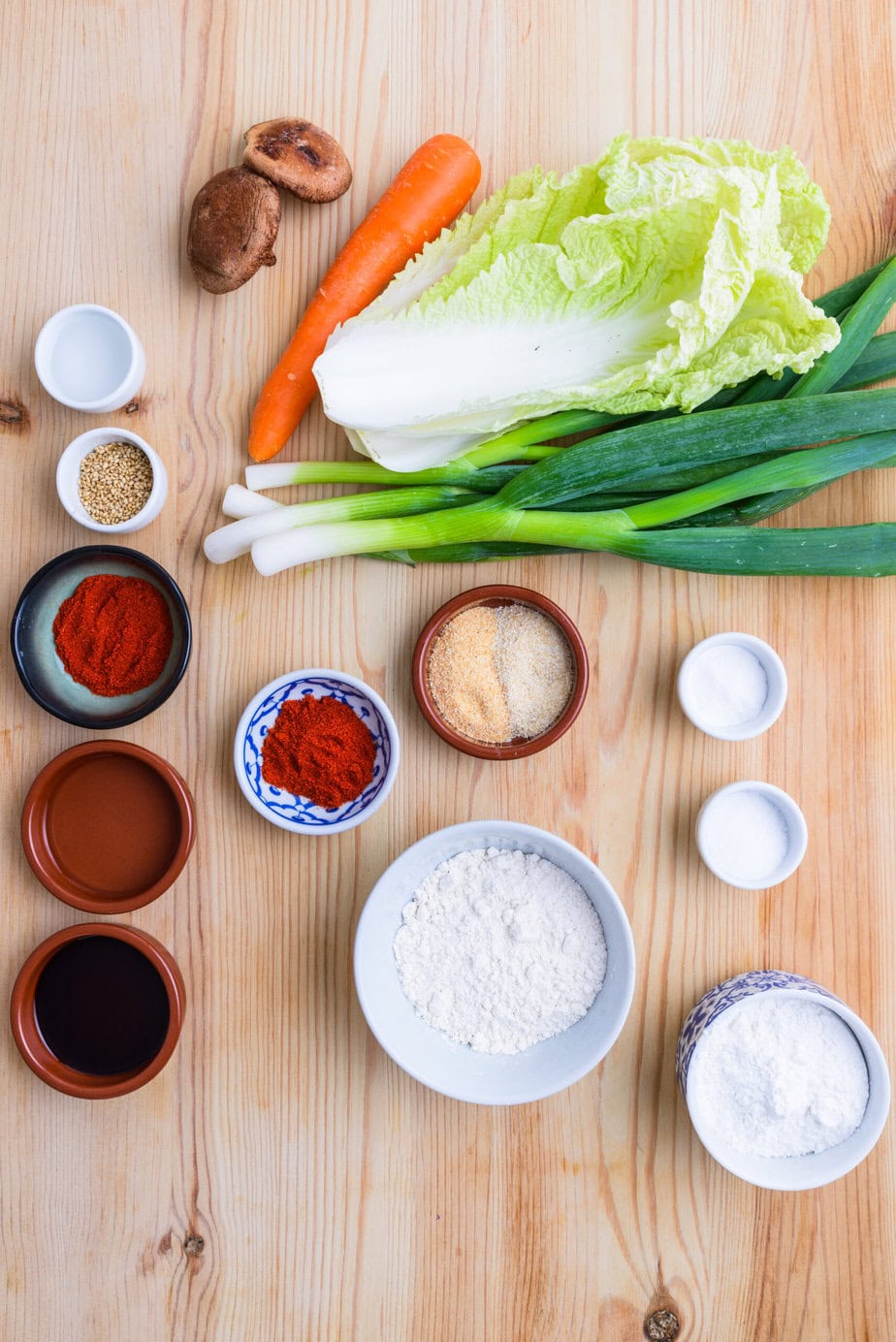
Rice flour: some people use wheat flour. In this recipe, I prefer to use rice flour mixed with traditional flour, for texture and other reasons. I also add bicarbonate, which really helps the dough to rise during the resting phase.
Gochugaru: if you don’t know what it is, it’s a typically Korean type of chili pepper often used to make a paste. In fact, it’s this very ingredient that gives Kimchi its spiciness and beautiful red color, and it’s found in a number of Korean recipes, including Kimchi jjampong bokkeumbap, Bibimbap and the famous Bulgogi beef!
Young onions: found in the vast majority of Asian dishes. You have to admit, it adds that little kick of freshness and sweetness. If you’re crazy about them, I recommend my recipe for young onion oil, which will liven up all your noodle dishes.
Carrots: part of the traditional vegetable package in Asian cuisine. The interesting thing about carrots is that they don’t expel water. And they add a sweet flavor to the whole dish.
Shiitake mushrooms: a variety of mushroom of Japanese origin, characterized by its umami flavor and tender, fibrous texture. They are sometimes mistaken for meat, making them a good substitute for vegetarians!
Chinese cabbage: It’s used for everything, and yes, even in pancakes, but also in jeon cabbage, for example, or Yasai Itame if you’re really a vegetable fanatic.
Light soy sauce: we use it for dipping with the crêpe squares. Light soy sauce is ideal for dipping, which is less the case with dark.
Rice vinegar: To soy sauce, we add the rice vinegar used in vinaigrettes and marinades. I’ll leave it to you to choose among the different types that exist. Black rice vinegar, for example, is just the thing!
White sesame seeds: here, I’ll be using white sesame seeds. By the way, I’ve put together a guide to sesame seeds, so you’re all set!
Tips for a successful Yachaejeon
If you know how to make pancakes, you’ll know how to make Yachaejeon, that’s for sure. But there are a few things you need to know. Vegetables give off quite a lot of water, and this can become a bit of an obstacle in your preparation. Make sure you spin your vegetables well, especially the shiitake mushrooms.
Speaking of water, when preparing your dough, be sure to use cold water. This will ensure a better texture.
And if you do happen to prepare the dough in advance (which is also possible), I recommend placing it in the fridge until you’re ready to use it. The idea is to keep the dough as cold as possible.
For the sake of texture, don’t skimp on the oil. Don’t hesitate to coat the bottom of the pan. If you want your Yachaejeon crispy, this is the way to go. Also, don’t flip your pancakes too quickly; wait for each side to turn golden and crisp, the result will be all the better!
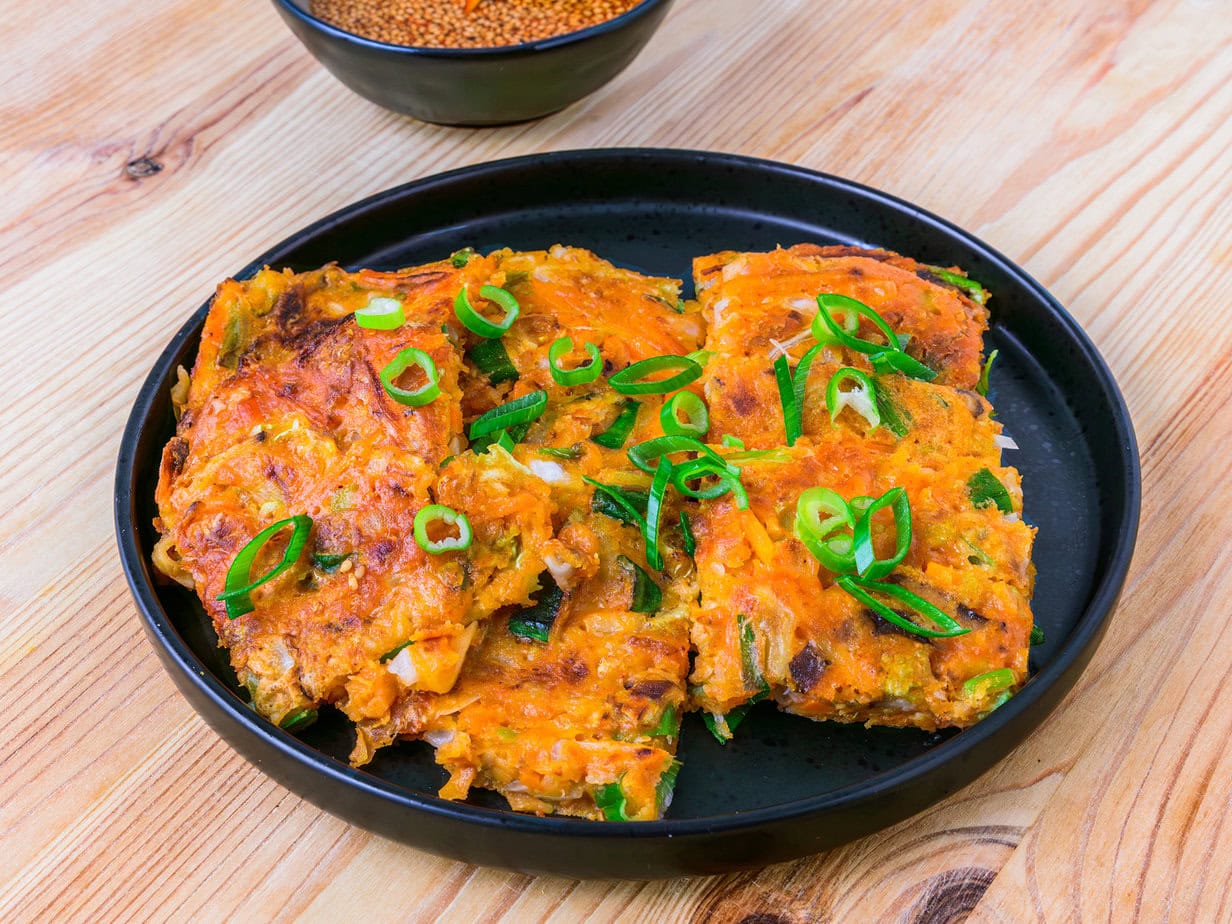
Korean Vegetable Pancakes – Yachaejeon
Ingredients
For pancakes
- 60 g flour
- 80 g rice flour
- 235 ml water
- 1 teaspoon baking soda
- 1 tablespoon salt
- 1 tablespoon onion powder
- 1 tablespoon garlic powder
- 1 tablespoon gochugaru
Vegetables
- 4 green onions cut into 1cm segments
- 1 carrot very finely julienned
- 2 shiitake mushrooms very finely julienned
- 100 g Chinese cabbage grated
For the dipping sauce
- 2 tablespoons light soy sauce
- 1 tablespoon water
- 1 tablespoon rice vinegar
- 2 teaspoons gochugaru
- White sesame seeds
Instructions
- Mix all the sauce ingredients in a small bowl and set aside.2 tablespoons light soy sauce, 1 tablespoon water, 1 tablespoon rice vinegar, 2 teaspoons gochugaru, White sesame seeds
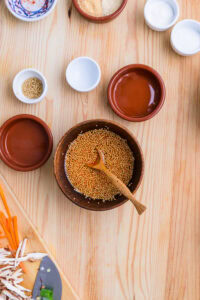
- In a large bowl, combine all dry ingredients.60 g flour, 80 g rice flour, 1 teaspoon baking soda, 1 tablespoon salt, 1 tablespoon onion powder, 1 tablespoon garlic powder, 1 tablespoon gochugaru
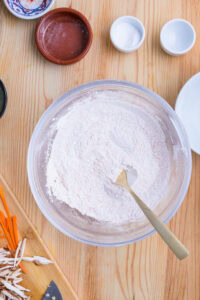
- Add the water and whisk until smooth.235 ml water
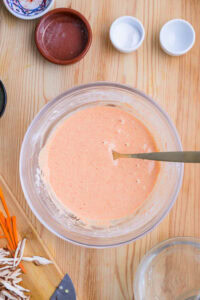
- Stir the vegetables into the dough.4 green onions, 1 carrot, 2 shiitake mushrooms, 100 g Chinese cabbage
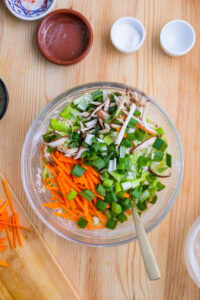
- Heat your frying pan and add enough oil to cover the bottom. Don’t hesitate to add plenty.
- Place a generous or small amount of the batter mixture in the pan.
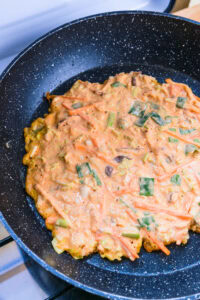
- Spread the dough thinly with a spoon.
- Cook for 3 to 5 minutes on each side, until the pancakes are crisp and golden.
- Cut the Korean pancakes into small squares or serve individually on plates.
- Serve with the accompanying sauce while still hot.
